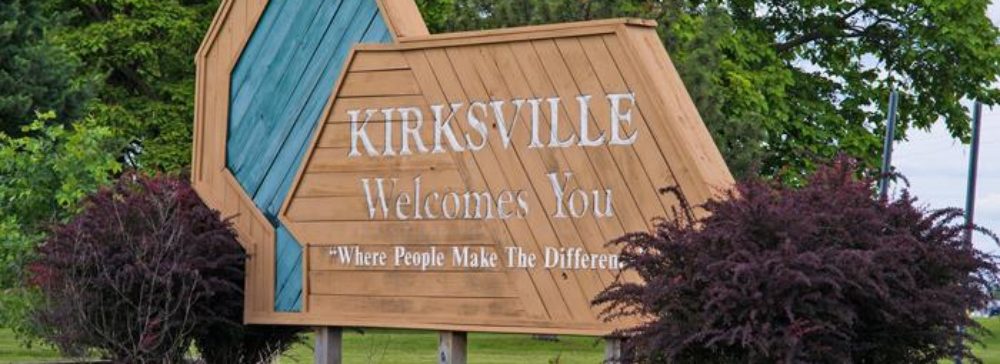Our Mission
Food insecurity suggests difficulty not only affording food for an individual, but also providing it for families, especially fresh foods that provide a nutritious and balanced diet. Using Kirksville, Missouri as a model for rural towns in the midwestern United States, this study will explore the sources of food in such areas, as well as the cost of this food. Ultimately our goal is to illustrate food insecurity in Kirksville and what this experience looks like for those involved.
The Statistics
According to the United States Department of Agriculture, in 2017 11.8% of all households in the United States were food insecure. Areas with higher levels of economic inequality show higher levels of food insecurity, and rural areas of the United States are especially susceptible. The Community Action Partnership of Northeast Missouri has found especially high levels of food insecurity within the state of Missouri, at a proportion of 16.8%.This level is even higher in Northeast Missouri, at 17.16%; Adair county has the highest food insecure population within this region, at 18.45%. About 52.29% of children attending Adair public schools participate in free or reduced lunch programs, compared to 49.41% in the entire state of Missouri.
Table from CAPNEMO Community Needs Assessment
Mapping Food Sources
To explore potential sources of food insecurity within the Kirksville community, we compared the locations of various grocery stores and other food sources, as well as the prices of a healthy basket at each store. This basket was compiled of a dozen eggs, a gallon of 2% milk, a loaf of wheat bread, three pounds of apples, two heads of broccoli (or the frozen equivalent), one pound of ground beef, and a case of bottled water. The Story Map below shows the location of each store paired with the prices of each item in the basket, along with the total cost. It should be noted that not all stores stocked each of the items we searched for. The map also shows the locations of food pantries within the community.
Once we compiled data from the grocery stores, we created a second map using data from the Opportunity Atlas. This map illustrates income levels within Kirksville; arrows point to each of the locations we included on the Story Map.
Findings From the Maps
According to our research, Aldi is the cheapest of the grocery stores that stock each item. It is located within the range of the lowest income area of town; however, it is also one of the only food sources in this area. In general, stores and food pantries are located along central streets of Kirksville. Those who live closer to the borders of town may have a more difficult time reaching all stores, especially if they don’t have reliable access to transportation. Countryside Market is the only store located out of this central area, and it is one of the more expensive stores on our list.
Our group has found that only three out of eight locations had all of the food items we determined to be necessary in a healthy basket. Our research also found that the locations that are deemed as “convenient” had higher prices and a more limited range of items; most of these locations are located in the central or southern parts of town. Most food banks are also located in this area. According to the Opportunity Atlas, this area has the largest proportion of low-income residents; thus, food pantries are located in the best locations to serve the neediest populations of Kirksville.
Conclusions
Overall, Kirksville is a community that struggles greatly with food insecurity. The statistics for the city are far higher than those in other parts of the state, likely due to the high level of low-income families within the area. The number of food pantries within the town (at least six for a population of only 17,000) is suggestive of the level of need within the community. While grocery stores with relatively cheap and healthy food are accessible, the cheapest food tends to be highly processed and generally unhealthy. Moreover, the healthy food that is available is limited to a few select locations. Further research may also cover restaurants within Kirksville, especially fast food restaurants, in order to see clearer connections between health and food insecurity.
The city of Kirksville has made progress by developing new stores, creating more jobs, and opening more food pantries. However, a great deal of the population remains food-insecure and low-income. Thus, improvements must continue to be made in order to ensure the wellbeing of the community and help every individual access fresh and healthy food.
Contributors
Angel Failor
B.S. Sociology
Pre-MAE
Caroline Lesch
B.S. Linguistics
Art and Women’s and Gender Studies minors
Dascha Stewart
B.S. Sociology
Disabilities Studies Minor
Mallory Rodell
B.A. Anthropology
Spanish Minor
Works Cited
“2017 Community Needs Assessment.” Community Action Partnership Northeast Missouri, 2017.
“Key Statistics & Graphics.” Food Environment Atlas, United States Department of Agriculture, 2017.
The Opportunity Atlas. U.S. Census Bureau, 2018.


